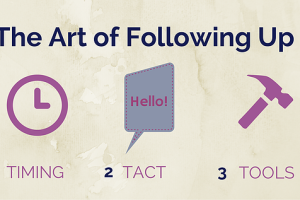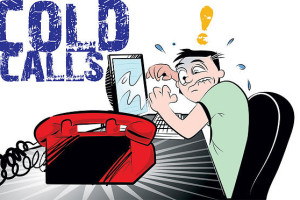Captivating your audience should always be on the mind of a successful marketing and sales professional. For a new or an existing business, email newsletters provide the most cost-efficient method for engaging on a regular basis. While it may take a little while to build an appropriate subscriber’s list, after that list is made, email communication set the balls in motion for deeper interest.
But what if your readers, who field dozens of emails a day, fail to notice your message? What if this “cost-efficient” marketing is failing to attract people and instead ends up in the trash? What if your newsletter flops, due to lack of interest? What if I were to tell you we have a solution – and it has little to do with your content, but much more to do with the way your content was presented in the first place.
It’s the first words your reader identifies: email Subject Lines.
There of course will be doubters (as there should) who question the fact that email secrets in a simple subject line can increase click rates. The truth is no magic word exists to achieve this—it is up to you to learn how to grab your reader’s attention. So keep reading for advice on how to refine your subject line for maximum punch.
Speak less and say more
Most email subject lines show a maximum of 50-55 characters, but on mobile devices that’s wishful thinking. Those reduced screens squash all the information to the bare minimum—which is what you should do too. Try to keep your line less than 30 characters, with a maximum of 45.
Delete any filler words that do not precisely pertain to your email—hello, thanks, nice to meet you. These are meant for the inside of the email. Think of it this way, if you can say the same thing without that word, why include it?
Another way to shorten information in the subject line is to keep the sender information in the “From” tab. Instead of saying, The Daily Planet: News For Valued Readers, try Superman: Friend or Foe? The 2nd line tells the reader specific information instead of a vague title. It also asks a question, which is a great attention-grabber. When you ask a question in the subject line, readers will often open the email to get the answer. Also, if you send out a monthly newsletter, including the same subject line may bore readers—such as the first example. Focus on changing your subject line to match the new content for that month.
Because you include all your sender info in the “From” tab, make sure to personalize your information. This is especially important if you are a new business. While it may seem fancy and good branding to always list your company name, most email research agrees that a personal name is more likely to garner clicks and trust. Keep the “From” tab consistent as well, to avoid any confusion in the future.
In this vein, remember to tell, not sell. While a subject line that says, 50% off of Everything!!! sounds straight to the point, most readers recognize this as a ploy and often delete without a second glance. Try instead, Looking for cheap business wear? Check here. This asks a question, says exactly what’s in the email, and avoids sounding too sales-y.
Yelling and being cute is unlikely to help
The use of ALL CAPS may seem like a good idea to catch the reader’s eye, but it almost always comes across as yelling. No one likes being yelled at.
In that same category, it is often attractive to personalize subject lines with the name of the recipient. While this can be effective at times, it is least effective when the name of the recipient is in ALL CAPS. If you decide to include the recipient name, aim to write the first name and only caps the first letter. Also, using the name of the recipient may not work well for your company—it can appear auto-generated. Use this ploy with caution.
“Being cute” encapsulates all attempts at using emoticons or unconventional icons in your subject line. If you use a smiley face or star, those symbols may not translate for every device. Instead, they end up as incorrect formatting or ! on your subject line. If you must make use of a symbol, try to keep it in the middle of the subject line. Avoid the beginning, as readers scan the beginning for relevant information first and may become frustrated with a symbol and discard immediately.
ALL CAPS are not the only form of yelling in print! Many companies wish to use an exclamation point to emphasize urgency, such as the ending of a sale, but this kind of formatting turns off readers. Using other formatting for shock value, such as Want to win big????? is ineffective as well, and causes readers to distrust the source.
Know who your friends are
If you’re emailing a friend, you might make the subject line, Dude, where’s my car? or some other catchy, clever line. While this is appropriate for people with whom you are close, avoid subject lines that could easily be misunderstood by a stranger or new acquaintance. If you’re emailing only return-customer who are familiar with your brand, feel free to liven it up and get real.
Even if you don’t yet consider a potential customer a friend, treat them with the same respect. This means that if you make a statement in the subject line you should definitely expand on that subject in the body of your email. This comes back to the tell, don’t sell approach—your focus should be on giving the potential customer a quality experience that keeps them interested in your company.
Words matter
Research has shown that particular words marketers have used widely may not be helpful anymore. These words include “free,” “help,” “assistance,” and “donate.” These words actually reduce the click rates exponentially. Other words that may decrease click rates are “percent off” and “reminder.”
Remember, while there is no magic word or phrase to coerce readers to open your message. Instead, it is up to you to refine your skills to optimize your click rates. Just choose your words carefully. Keep it short. Often the subject line needs more time spent on it than the entire body of the email. Avoid cluttering it up with filler, symbols, and unhelpful words like “help.”
Now try a few strategies of your own to make your subject line pop—you may discover another method that encompasses all of these and works wonders for your company.








